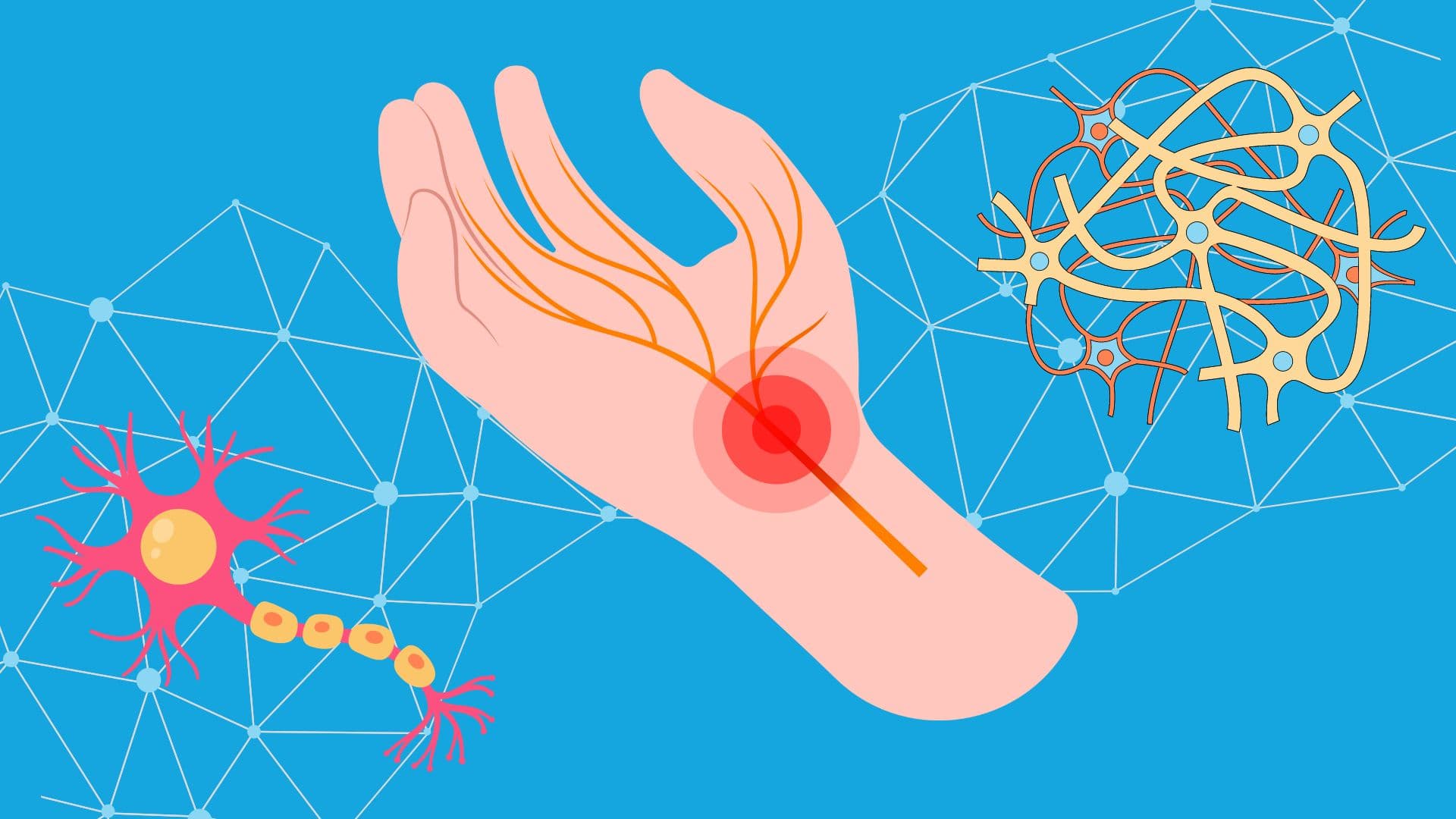
Peripheral nerves in the upper and lower limbs may be injured due to fractures or compression. Each nerve injury can be diagnosed by specific deficits in the corresponding area of distribution. Brachial plexus gives rise to all major nerves in the upper limb. Lesions of the brachial plexus are seen in birth injuries.
If you’re looking for a comprehensive course to pass your USMLE Step 1 exam the first time, try Achievable’s USMLE Step 1 course. Our course is information rich, concise, and uses spaced repetition-backed practice questions to improve your memory retention.
00:00:00 Hi everyone this is Sujata. In this video we will solve 5 questions on upper and lower limb nerve lesions. Question one, a 70 year old woman falls on her outstretched hands. She has pain and tenderness over the anatomical snuff box. What pathology will be seen in this patient? Options are option A. 00:00:25 Wrist Drop option BA Vascular necrosis. Option C Median Nerve Injury Option D Dislocation of the radial head. Correct answer is option BA Vascular necrosis. So this is a case of push injury or fall on outstretched hand injuries which are associated commonly with fractures of the wrist and forearm. She has fracture of the scalfoid bone. 00:00:54 Which presents with pain and tenderness over the anatomical snuff box. Scaphoid fractures are associated with risk of malunion, nonunion and avascular necrosis. Question two A 45 year old man suffers fracture of the surgical neck of humerus. What type of deficit will be seen in this patient option A. 00:01:21 Initiation of shoulder abduction Option B Wrist drop Option C Sensory loss over lateral arm. Option D Sensory loss over lateral forearm. Correct answer is Option C Sensory loss over lateral arm. This patient has fractured surgical neck of humerus which leads to injury of the axillary nerve. Axillary nerve is motor to the deltoid muscle. 00:01:49 Which causes abduction at the shoulder joint above 30 degrees and it also supplies sensation to the lateral arm. Question three, Following a difficult labor, an infant is born with upper limb palsy. His arm is adducted and medially rotated. There is sensory loss over lateral arm and forearm in the figure, which is the location of his injury. 00:02:17 Correct answer is option A which stands for the superior trunk of brachial plexus that is formed by nerve root C5 and C6. This infant is suffering from herb duchine palsy and presence with what is called as a waiter's tip deformity where the arm is adducted and medially rotated. There is sensory loss in the musculocutaneous nerve distribution in the figure. 00:02:47 Point B is the posterior cord of the brachial plexus, Point C is axillary nerve, point D is radial nerve and point E is the inferior trunk of the brachial plexus. Injury to inferior trunk or point E will lead to klumke. Spousy question 4 a 55 year old woman with hypothyroidism. 00:03:13 Presence with tingling and numbness over her hand and weakness in thumb moments. Tinel sign is positive. What deficit will be seen in this patient? Option A sensory loss over dorsum of hand. Option B Sensory loss over palm of hand. Option C Sensory loss over Palmer surface of the index finger. Option D Sensory loss over the hypothinner eminence. 00:03:44 Correct answer is option C, Palmer surface of index finger. This patient is suffering from carpal tunnel syndrome which is caused by compression of the median nerve. In carpal tunnel syndrome, sensory loss is not present in the Palmer area because the Palmer cutaneous branch of the median nerve is not in the carpal tunnel. 00:04:11 Whereas there is still loss of sensation on the Palmer or ventral surface of the lateral 3 1/2 digits which are supplied by the Palmer digital cutaneous branch of the median nerve which passes through the carpal tunnel. Question 5 a 25 year old man suffers from fracture of the fibula. What type of deficit will be seen in this patient option A? 00:04:39 Sensory loss on skin between first and second toes. Option B Sensory loss over heel. Option C Loss of plant or flexion of the feet. Option D Loss of knee flexion. Correct answer is Option A Loss of sensation on skin between first and second toes. 00:05:05 This patient is suffering from common peroneal nerve injury which is often associated with fractures of the fibula. He will have foot drop along with loss of sensation on posterolateral leg and dorsum of feet which includes the skin between first and second toes. Hope this video helps you solve questions on upper and lower limb nerve lesions. Thanks for watching.

This video explains the changes seen in cardiac cycle tracings in valvular heart diseases. You can learn key features to help you differentiate normal from abnormal tracings in specific valvular disorders.

Becoming a pharmacy technician is an excellent choice for those interested in an accessible, lucrative career path within the healthcare field. Acquiring a pharmacy technician certification will allow you to outshine competitors and enhance your chances of obtaining your ideal position within the pharmaceutical industry. In order to earn a Certified Pharmacy Technician (CPhT) credential, …

In this video Sujata explains the pathophysiology, diagnosis and management of pneumothorax. It is a high yield concept for all steps of the USMLE. Pneumothorax is of four different types and management is guided by the type and severity.